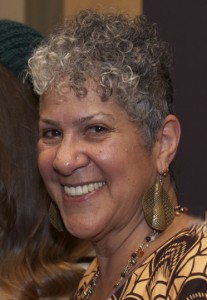Many members of our community are working to make our campus more inclusive by focusing on three priorities we identified after the fall student forum, Diversity University: In Theory and In Practice. The priorities are: (1) improving interactions between Public Safety and students, (2) increasing the scope and intensity of the Making Excellence Inclusive program on campus, and (3) enhancing town-gown connections to increase opportunities for positive interactions between the campus and the city.
Dean Rick Culliton is overseeing a Public Safety Review Committee, composed of students, staff, and faculty members. The committee’s charge is to work with the director of Public Safety to address concerns raised by students last fall. The committee has recommended that Public Safety modify campus safety alerts to provide descriptions of suspects without using race as a descriptor, and Public Safety has adopted this practice. The committee continues to review the department’s policies and protocols, web presence, and schedule of trainings. Ensuring that there is a clear path for reporting concerns to the department is important. The committee also will serve as a liaison for an external review by Margolis Healy and Associates, a leading campus law enforcement consulting firm. The consultants will meet with students, faculty and staff on April 30 and May 1 to conduct a complete assessment of the Office of Public Safety.
Vice-President and Chief-Diversity-Officer Sonia Mañjon has been leading our work on the intensification of MEI. Faculty, staff, and students will receive a Campus Climate Survey on Monday, March 25, and I urge you to respond to this important document. One of the recommendations that has emerged from our MEI discussions already has been to pursue faculty and staff diversity more energetically, seizing opportunities to hire members of groups under-represented on campus. We have been doing so and are encouraged by the results. The Making Excellence Inclusive task force and the WSA committee on Diversity and Inclusion are expected to make recommendations with regard to MEI goals based on discussions with students, faculty and staff.
To address our third priority, improving town-gown relations, we have held a variety of meetings with local stakeholders in education, community enhancement and economic development. Vice-President John Meerts has been meeting with groups on-and off-campus, and we continue to explore ways to be a better institutional citizen and neighbor.
The next Diversity University Forum will be held on April 24, and will focus on diversity in the curriculum. Our work to build a more inclusive and caring community will continue with new student orientation in the fall of 2013, which will be devoted to “Diversity and Inclusion.” The Board of Trustees will focus its fall retreat on discussing diversity on campus.
Recognizing that building an inclusive campus culture is a work-in-process, Wesleyan remains committed to creating, as our mission statement puts it, a “diverse, energetic community of students, faculty, and staff who think critically and creatively and who value independence of mind and generosity of spirit.”



